Submitted by WA Contents
Desert X presents 12 installations exploring social and environmental issues in the Coachella Valley
United States Architecture News - Mar 17, 2023 - 10:17 3919 views
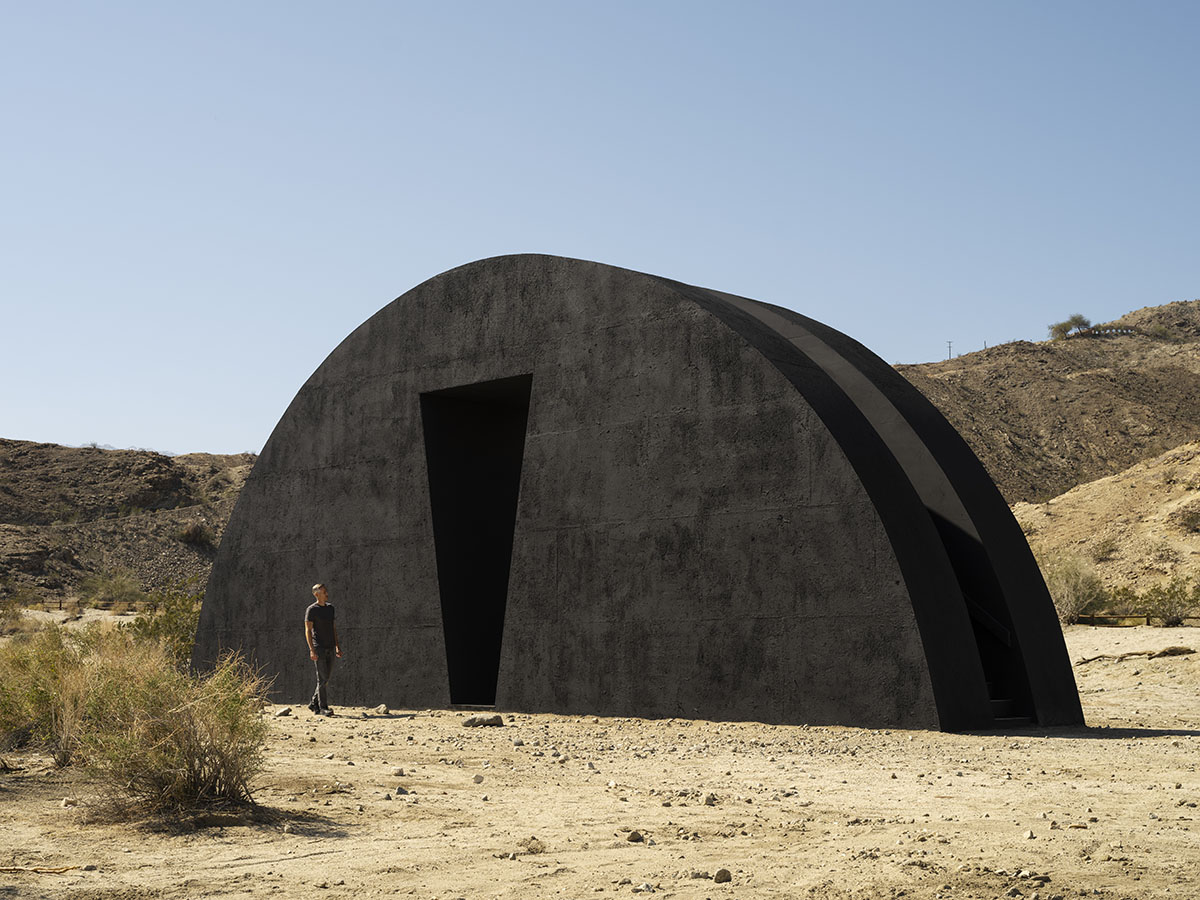
Desert X, the recurring site-specific, international art exhibition, has opened its fourth edition with 12 site-specific installations by artists from Europe, North America and South Asia in the Coachella Valley, California, United States.
Free to public, the exhibition is now open from March 4 until May 7, 2023, at different sites across the Coachella Valley, in the Colorado Desert in the United States.
Curated by Artistic Director Neville Wakefield and Co-Curator Diana Campbell, the large-scale twelve installations are addressing today's social and environmental issues - starting from climate crisis, globalism to political and economic migrations that the world faces.
London-based artist Rana Begum, Bangladeshi architect Marina Tabassum, Latin American artist Mario García Torres, multi-media performance duo Hylozoic/Desires (Himali Singh Soin & David Soin Tappeser), Los Angeles-based Matt Johnson are among the artists who present their works in the desert.
The twelve immersive works span sculpture, painting, photography, writing, architecture, design, film, music, performance and choreography, education, and environmental activism.
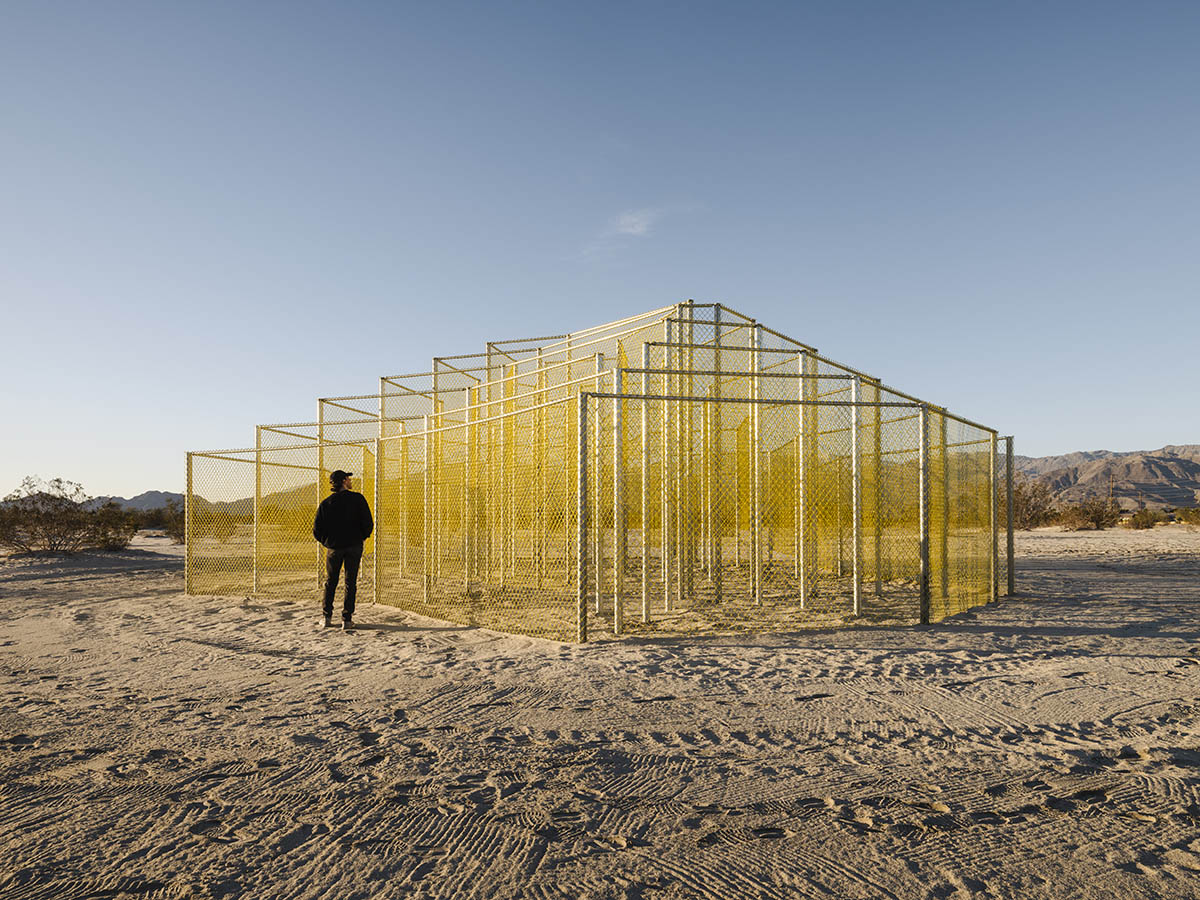
No.1225 Chainlink 2022-23 / Rana Begum. Image © Lance Gerber
"There’s a saying attributed to the Kwakwaka’wakw nation that a place is a story happening many times," said Artistic Director Neville Wakefield.
"This idea of place as the multiplicity of stories flowing through it is central to Desert X."
"Artists are an essential part of this understanding and the ideas they bring to it irrigate our perception of place, nourishing the narratives already there and propagating those that have yet to be told," Wakefield added.
The exhibition, which builds on social and environmental themes explored in earlier editions, brings the new works to audience as "instruments of self-awareness and devices of wonder" and explores the forces that we exert on the world.
According to the curators, the presented works become the representation of how we design our environments, how we live, and the messages we send that reinforce systems that might or might not be beneficial for us.
"From the local to the global, from schools and roads to global trade routes that define the ebb and flow of goods and many things in-between, infrastructure has subsumed creative ways of being that are inconvenient to forces of power," they added.
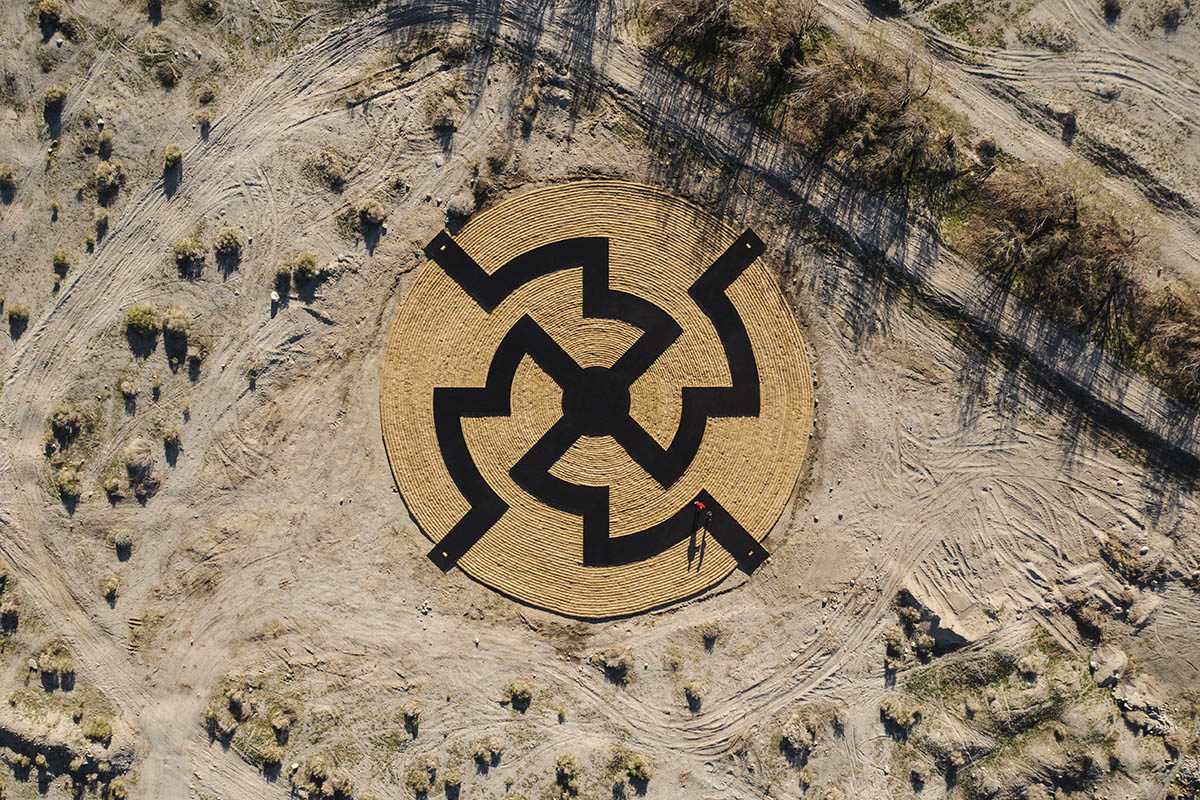
Immersion by Gerald Clarke. Image © Lance Gerber
"Desert X 2023 can be seen as a collection of artistic interventions that make visible how our energy has a transference far beyond what we see just in front of us in our own localities," said Co-Curator Diana Campbell.
"From deserts to floodplains, finding, building and developing tools and tactics to shelter our minds and bodies from the harshness of the world outside are essential to survival."
"In a time of global crisis, many of the artists have created spaces of freedom and possibility, suggesting new ways to build healing cultures of care that embrace and protect (bio) diversity, opening up opportunities for joy and hope anchored in justice."
"Immersing ourselves in the stories of place also awakens us to its mythologies, whether they be religious texts or oral traditions across multitudes of belief systems that see us creating vessels to escape the flood as well as being cast into the arid wilderness to test the limits of existential and spiritual survival," Campbell added.
Since 2017, Desert X is conceived to create recurring site-specific and international art exhibitions that activate the desert environments through site-specific installations by acclaimed artists from around the world. Since its foundation, Desert X has provided 800 cumulative in-class instruction hours to 2,000 students and 50 teachers in the region.
Read more on the twelve installations presented at Desert X 2023:
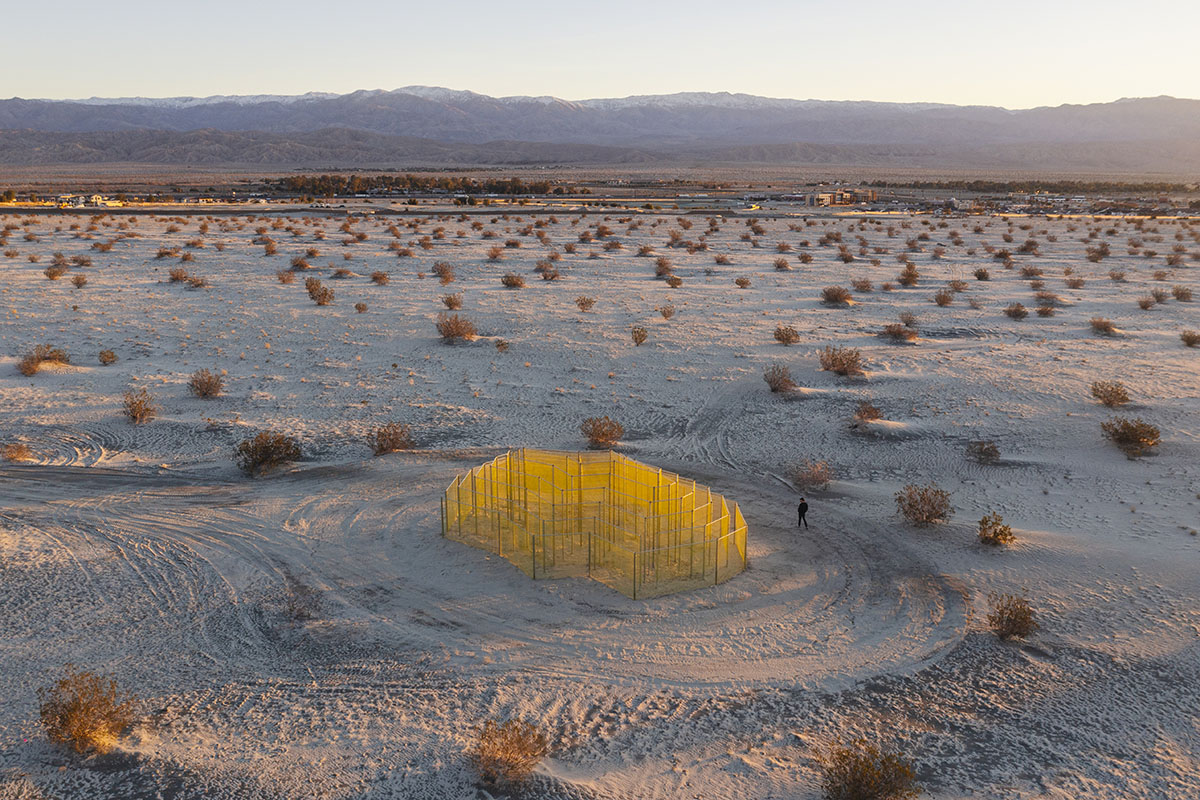
No.1225 Chainlink 2022-23 / Rana Begum. Image © Lance Gerber
No.1225 Chainlink by Rana Begum
British-Bangladeshi artist Rana Begum creates a yellow chain-link fence, refrencing to the "ubiquity of the material" spread across the Coachella Valley. A chain-link fence, a material meant to protect but also carries "associations of violence", in this project, Begum diffuses the material’s role as a divider through her manipulation of its form and color.
The artists shows uses the pavilion as base, reflecting how light and air, sand and water, as well as people, can filter through this cloud-like pavilion, while offering "paths of expansive escape rather than reductive confinement".
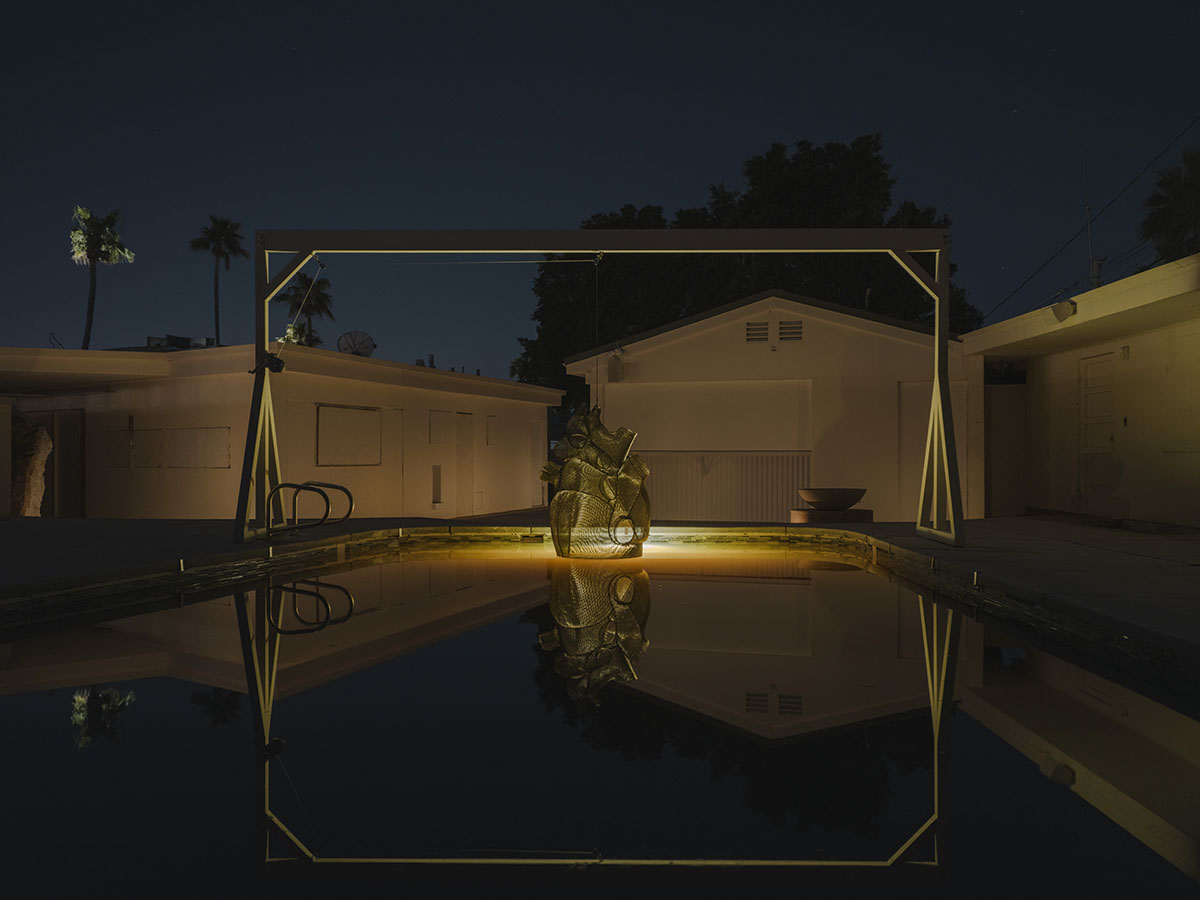
The Smallest Sea with the Largest Heart / Lauren Bon and Metabolic studios. Image © Lance Gerber
The Smallest Sea with the Largest Heart by Lauren Bon and Metabolic Studios
A lace-like steel sculpture by Lauren Bon and Metabolic Studios takes inspiration from plants, which metabolize sunlight into energy, and the blue whale, the largest animal known to have lived on Earth. Conceived as a poteic object, the installation, fueled with the potential of future life, by visually transforming itself in the process, merges swimming pools in a landscape associated with tremendous water shortage, with water and fish-bone skeleton “sand” from the Salton Sea.
The work is not only focusing on the imperative for artists to create at the same level as society’s capacity to destroy, but also of our own connection to water and that the desert was once a sea.
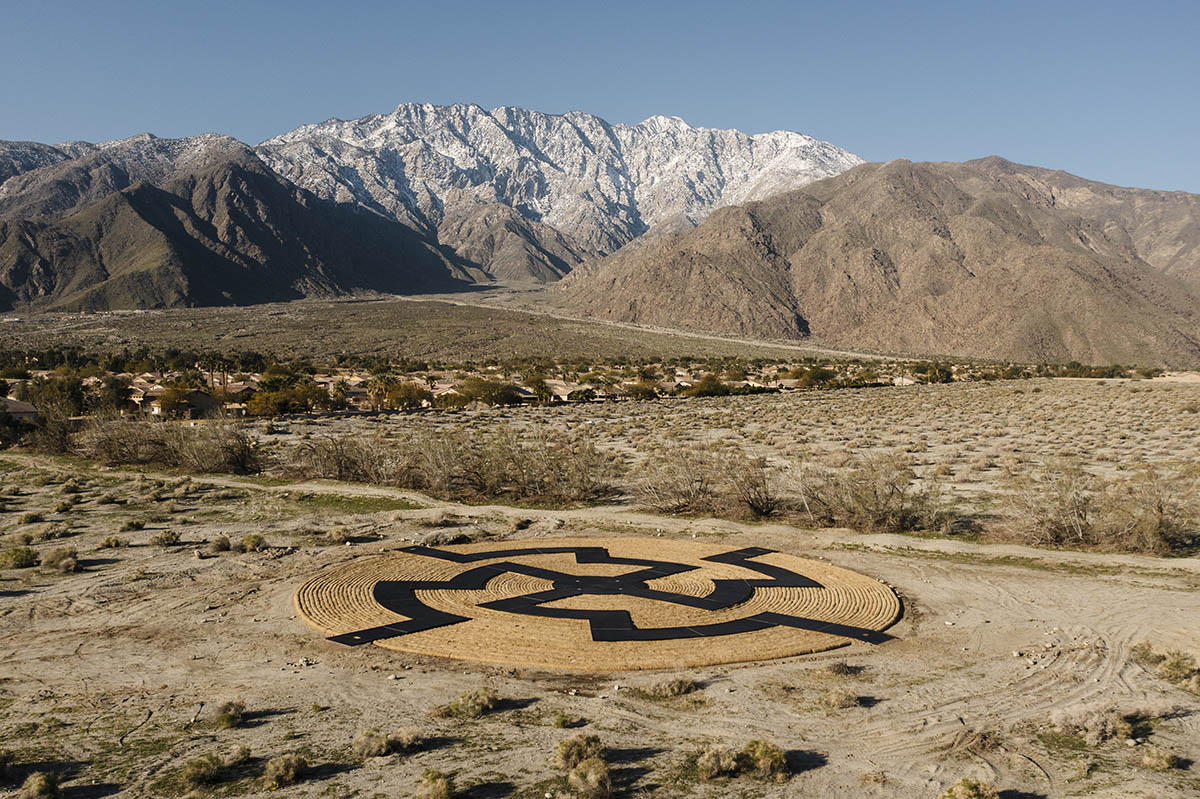
Immersion by Gerald Clarke. Image © Lance Gerber
Immersion by Gerald Clarke
Employing the language of traditional Cahuilla basket weaving and American board games, Gerald Clarke designs a monumental sculpture represeting "a gameboard" in the desert that immerses visitors in the natural and cultural history of Native Americans in the Coachella Valley.
While the work triggering active learning, the maze-like installation invites visitors to walk on it and move according to instructions driving a game of cards - in the end it rewards the player by opening up new ways of viewing and understanding the landscape.
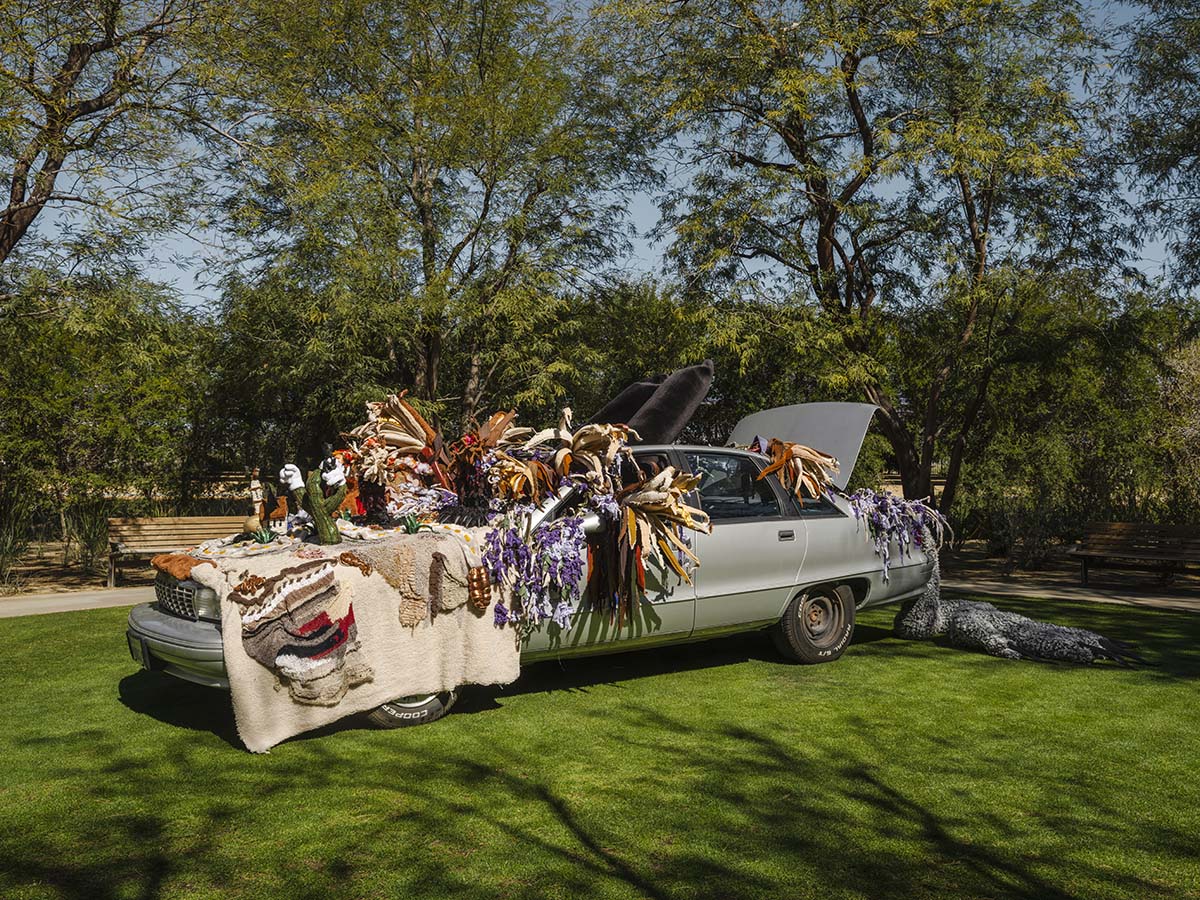
Amar a Dios en Tierrade Indios, Es Oficio Maternal by Paloma Contreras Lomas. Image © Lance Gerber
Amar a Dios en Tierra de Indios, Es Oficio Maternal by Paloma Contreras Lomas
Visitors encounter a collection of strange objects at the site; a dated car, an absurd array of tangled limbs of two mysterious characters wearing long hats and plush, long hands armed with soft-stuffed guns hang from the windows.
Paloma Contreras Lomas creates these strange characters as a caricature of a western–meets–sci-fi audio-visual tour of the landscape, like a fictional tour of a seemingly familiar world outside, guided by aliens and ghosts.
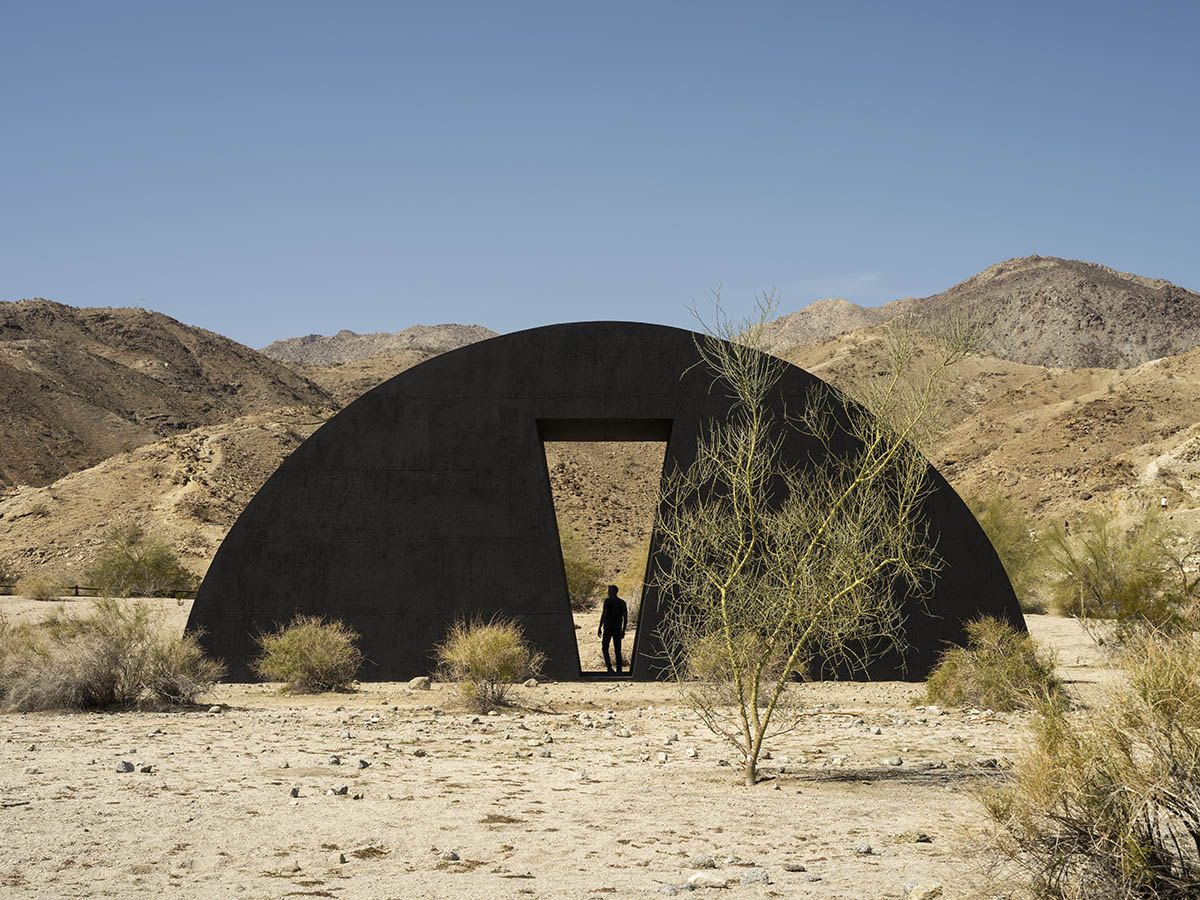
Liquid a Place by Torkwase Dyson. Image © Lance Gerber
Liquid A Place by Torkwase Dyson
Torkwase Dyson designs a monumental sculpture that emerges as a poetic meditation connecting the memory of water in the body and the memory of the water in the desert. The artist's installation is part of an ongoing series that started from the premise that we are the water in the room, inviting viewers to consider their bodily interconnection with rivers and oceans that surround us.
The artist understands and constructs new relationships from surface tension, movement, scale, real and finite space with the human body, and she asks: How do we go to the water in our bodies to harvest memory?. Can this liquid memory help us reconsider scale and distance as critical forms in holding onto liberatory life practices? What kind of scalable infrastructure can our bodies resist and invent, making cities more livable? How are new geographies formed from the architecture of our bodies?.
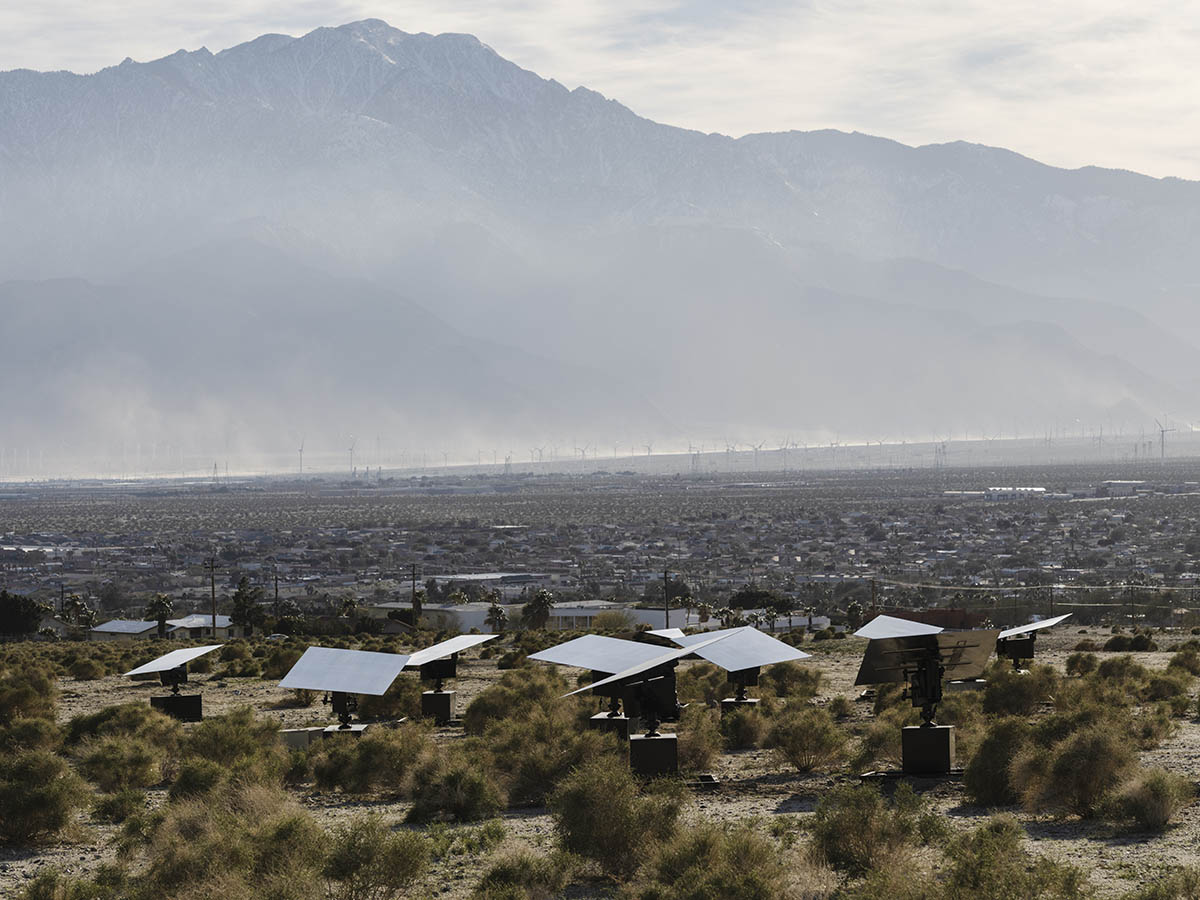
Searching for the Sky (While Maintaining Equilibrium) by Mario García Torres. Image © Lance Gerber
Searching for the Sky (While Maintaining Equilibrium) by Mario García Torres
Representing a reflection on “cowboy culture” that exists across both Mexican and American borders, the work is a representative of a macho, self- aggrandizing and forceful control of nature. Mario García Torres reinterprets a cowboy as a clown. In his installation for Desert X, the artist replaces the bull component of the mechanical bull with a flat, geometric, reflective surface, slowing down the machine’s movement to reveal, little by little, what this object really is.
Taking the formation of a herd, the installation leads us to contemplate the “wild West,” and our relationship to landscape and our role within it; our condition to be both attracted and replaced by failure.
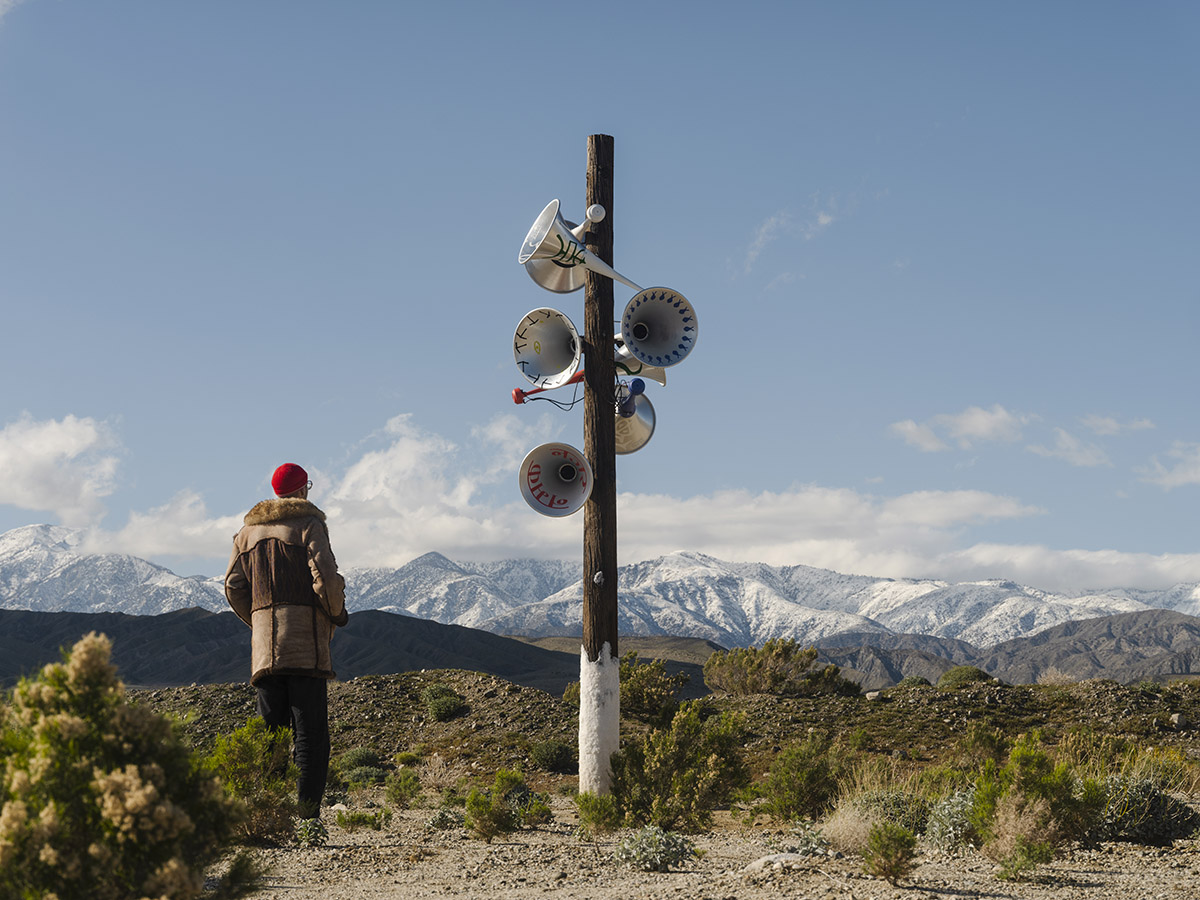
Namak Nazar by Hylozoic/Desires (Himali Singh Soin & David Soin Tappeser). Image © Lance Gerber
Namak Nazar by Hylozoic/Desires (Himali Singh Soin & David Soin Tappeser)
In this audio-based work, Hylozoic/Desires (Himali Singh Soin & David Soin Tappeser) invites visitors to rethink ecological loss and the loss of home, seeking shelter somewhere in the radicality of love in their immersive audio-visual environment. Using salt as a metaphor, the artists are inspired by the proliferation of conspiracies — UFOlogists, Scientologists, cybernetic spiritualists, Area 51, flat-earthers, lizard people and chemtrails.
The artists creates a wooden pillar that branches into loudspeakers, while the pillar is covered by a particle of salt that spells the doom of climate change and offers redemption by looking inward. The loudspeakers are washed with the voices from the physical desert landscape, where salt lines forecast droughts and floods to come and salt songs describe the sacred geometry of the desert before settler colonialism.
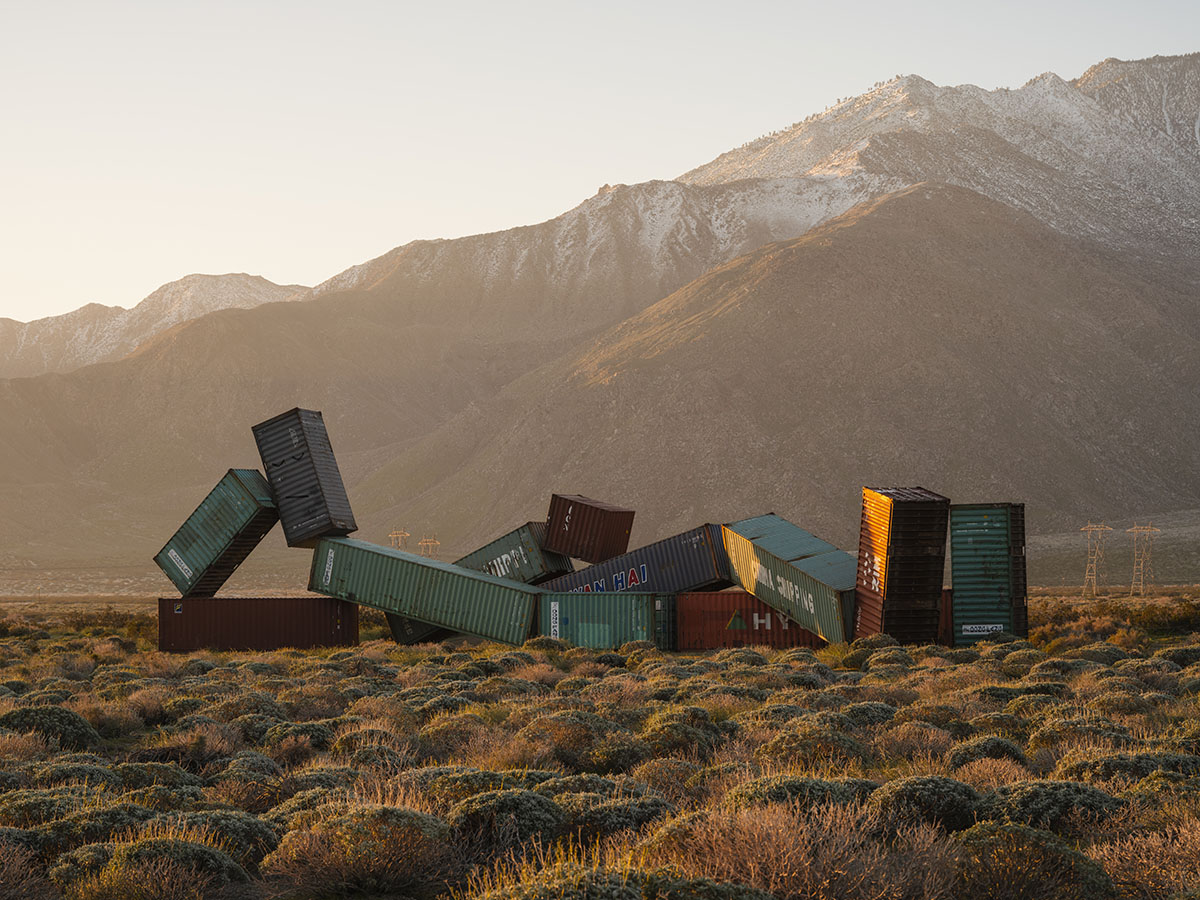
Sleeping Figure by Matt Johnson. Image © Lance Gerber
Sleeping Figure by Matt Johnson
Matt Johnson makes up Sleeping Figure from old shipping containers belonging to the globalized movement of goods and trade. The installation, conceived as "a cubist rendition of a classical odalisque", references to the 2021 Suez Canal obstruction by a Japanese-owned, Taiwanese-operated, German-managed, Panamanian- flagged and Indian-manned container ship.
Situated along the main artery connecting the Port of Los Angeles to the inland United States, Johnson’s Sleeping Figure figure speaks to the "crumples and breaks" of a supply chain economy in distress.
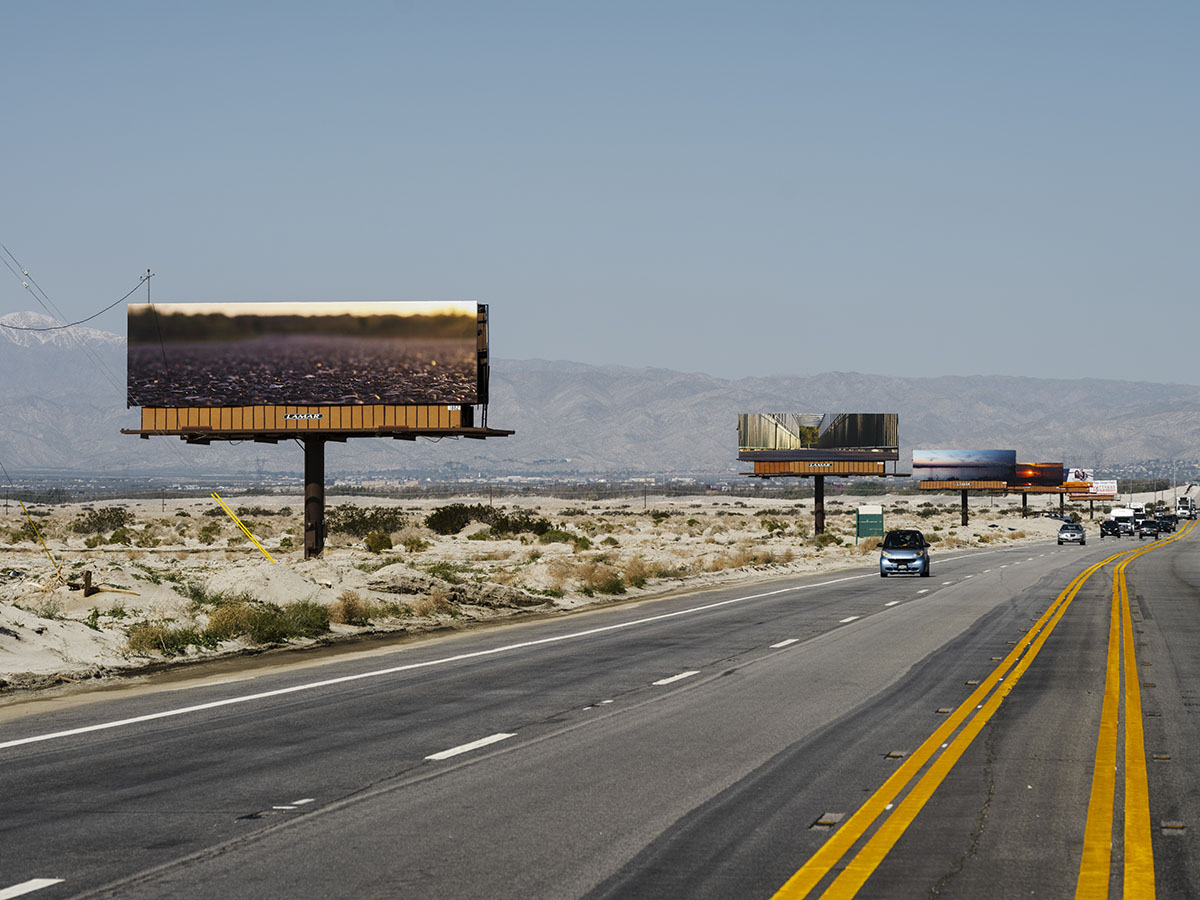 Originals by Tyre Nichols. Image © Lance Gerber
Originals by Tyre Nichols. Image © Lance Gerber
Originals by Tyre Nichols
Sacramento-based artist and photographer Tyre Nichols brings the attention to the potential of all those individuals whose lives have been lost to the state sanctioned violence of institutional racism.
Situated on billboards along Gene Autry Trail, the work acts as a reminder that so many of these needless deaths take place at the side of the road. Emerging as the "silent beauty" of these levitated images, the works are presented in stark contrast with the terror experienced by Nichols and so many others on the shoulder below.
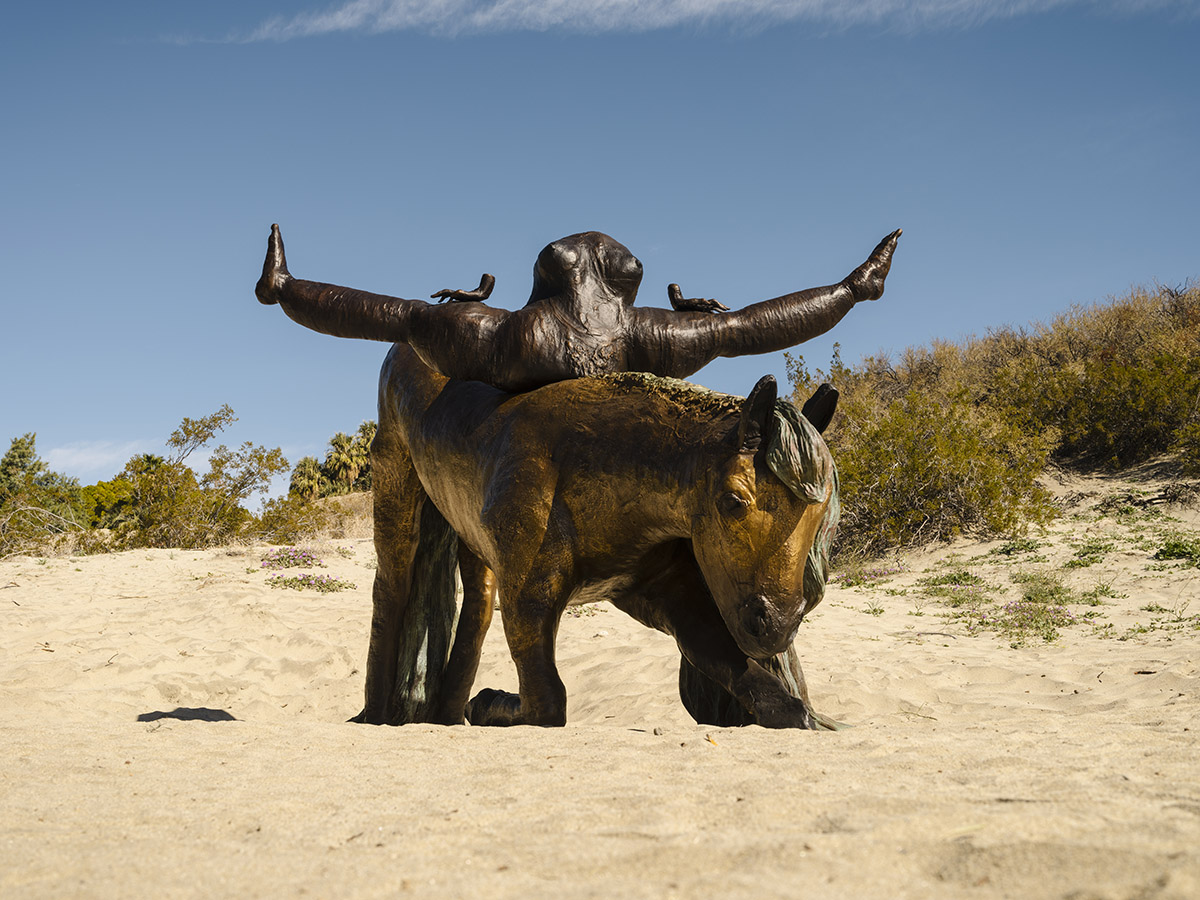
Pioneer by Tschabalala Self. Image © Lance Gerber
Pioneer by Tschabalala Self
New York-based artist Tschabalala Self creates a monument built in homage to the collective foremothers of contemporary America. Situated in the California desert, Pioneer exists as a figure that is simultaneously born out the historical event of America’s creation and one that has an ephemeral quality, untethered by any moment in time.
According to the artist, the desert often references both the beginning and the end. The sculpture embodies flexibility of the divine feminine spirit and form and the fluidity of identity in contemporary America. The work is a reminder that even in the desert, we are born from water. Placed within a palm oasis of the desert, Pioneer poses the question: Does it only rain on wet land?.
Khudi Bari by Marina Tabassum. Image Courtesy of Marina Tabassum
Khudi Bari by Marina Tabassum
Architect Marina Tabassum contributes the Desert X 2023 exhibition with a film, titled Khudi Bari, which is a project in which Tabassum addresses dry and wet cultures and the role of design in enabling life in some of the world’smost extreme climate conditions.
Khudi Bari (Bengali for “tiny house”) is an example of a modular mobile home that, in Bangladesh. The mobile home is an inexpensive, durable, and relatively quick and easy to assembled and disassembled with minimum labor, taking advantage of a rigid space. As the architects emphasizes, the framed-structure is used to save goods and lives in the wake of flash floods on tiny “desert islands” of sand known as “chars” that precariously dot across the Bengal delta.
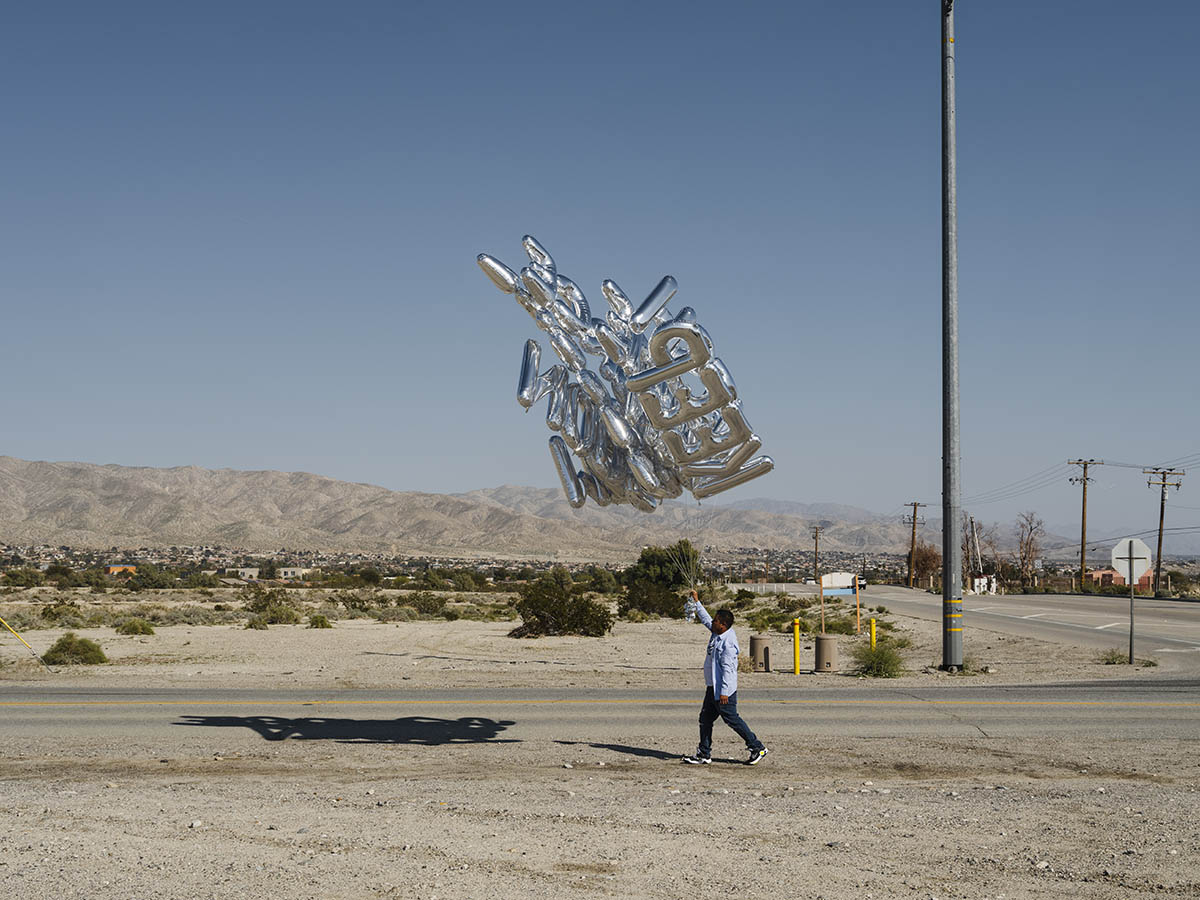
Chimera by Héctor Zamora. Image © Lance Gerber
Chimera by Héctor Zamora
Chimera is a performative action that transcends, reinvents, and redefines the conventional exhibition space, aiming to generate friction between the common roles of public and private, exterior and interior, organic and geometric, savage and methodical, real and imaginary.
In collaboration with street vendors who are ubiquitous in the Coachella Valley but often invisible in the landscape, the artwork implicates visitors’ participation and requires them to question the everyday uses of materials and the functions of space. Often collaborating with construction laborers, Héctor Zamora work provides opportunities for people to use materials differently and to break the rules to open new possibilities of expression and individuality.
Top image: Liquid a Place by Torkwase Dyson. Image © Lance Gerber.
All images © Lance Gerber unless otherwise stated.
> via Desert X
